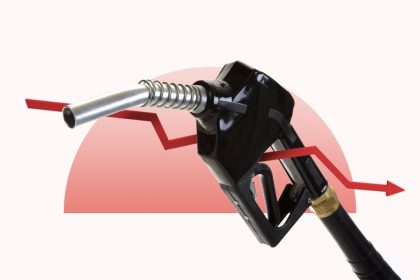Key takeaways
- The Chase Sapphire Preferred® Card and the Chase Sapphire Reserve® are two of the best travel rewards cards on the market.
- The Sapphire Preferred comes with a lower annual fee and is typically best for those just getting started with travel rewards.
- Frequent travelers will love the benefits and luxury perks afforded by the Sapphire Reserve.
- Both cards offer great earnings rates and excellent redemption options, so the best card for you is dependent upon your spending habits and goals.
Chase’s Sapphire duo comprises two of the best cards on the market for travelers, but narrowing down your own travel and spending needs can help determine whether the Chase Sapphire Preferred® Card or Chase Sapphire Reserve® is best for you.
With a $95 annual fee, the Chase Sapphire Preferred is the more approachable of the two travel credit cards. The Sapphire Reserve is the more premium option, with a $550 annual price tag to match. Both cards earn rewards on travel and dining spending and offer competitive sign-up bonuses.
Making the choice between the Chase Sapphire Preferred versus Sapphire Reserve comes down to your own spending habits and determining which will offer the most long-term value for you. Here are some things to consider:
Main details
| Feature | Chase Sapphire Preferred® Card | Chase Sapphire Reserve® |
|---|---|---|
| Welcome bonus | Earn 100,000 bonus points after you spend $5,000 on purchases in the first 3 months from account opening. |
|
| Rewards rate |
|
Note: All travel-related earning starts after you earn the $300 annual travel credit. |
| Introductory APR | None | None |
| Annual fee | $95 | $550 |
| Statement credits | $50 annual hotel stay credit through Chase Ultimate Rewards |
|
| Points value through Chase Travel Portal | 25% points-value boost for travel booked through Chase Travel | 50% points-value boost for travel booked through Chase Travel |
| Authorized user fee | No fee to add authorized users | $75 annual fee per added authorized user |
Chase Sapphire Preferred vs. Chase Sapphire Reserve highlights
Welcome bonus winner
-
The Sapphire Preferred has a new welcome bonus for a limited time: Earn 100,000 bonus points after you spend $5,000 on purchases in the first 3 months from account opening. This is a huge boost to the card’s welcome offer, and the highest we’ve seen.
When you redeem Chase Ultimate Rewards for travel through Chase Travel, you’ll get a 25 percent boost with the Preferred card, increasing the value of those points to 1.25 cents each. This makes the welcome bonus for the Sapphire Preferred worth $1,250 when redeemed through the Chase portal.
On the other hand, you’ll get a 50 percent boost with the Reserve card, which boosts the value of its 60,000-point welcome offer to 1.5 cents each. That makes the Reserve card’s welcome bonus worth $900 when redeemed through Chase Travel.
Rewards rate winner
-
The Sapphire Reserve is renowned for top-of-class travel rewards. Cardholders get a whopping 10X total points on hotel stays and car rentals (and 5X on airfare) through Chase Travel, whereas spending on all eligible travel through Chase Travel with the Preferred card earns 5X points. Additionally, Reserve cardholders get 5X points on Lyft rides through September 2027 and 3X points on general travel (compared to the Preferred’s 2X points on general travel).
While the Preferred’s rewards are nothing to sneeze at, its rates are slightly lower compared to what you’ll get with Chase Sapphire Reserve if travel spending is a significant part of your budget.
Annual fee winner
-
At $95, the Chase Sapphire Preferred’s annual fee is $455 less than the Sapphire Reserve’s $550 fee. Unless you’re able to offset that cost through added spending or by maximizing all of the credits offered annually, the Preferred card wins here.
That said, don’t overlook annual credit opportunities and additional perks when assessing the value of an annual fee. For Reserve, the $300 annual travel credit offsets the annual fee to $250.
Figure in the Priority Pass Select membership (a $299 value), and you’ve completely offset the annual fee. That, of course, assumes you would have paid for a Priority Pass membership on your own if the card didn’t offer it.
On the other hand, Sapphire Preferred cardholders enjoy an up to $50 annual credit for a hotel stay booked through Chase Travel, which effectively reduces that card’s annual fee to just $45, an easy figure to offset with minimal rewards earning and redemptions.
Foreign transaction fee
-
Both cards offer zero foreign transaction fees for purchases that you make while traveling abroad or in foreign currency with an online merchant.
Travel perks winner
-
The Chase Sapphire Reserve wins here, not only for its higher rate on dining and travel purchases, but also for the added benefits cardholders receive in annual credits.
Here’s a rundown of notable added benefits offered by the Sapphire Reserve:
- $300 travel credit, reimbursed as a statement credit for any travel purchases you make throughout the year
- Priority Pass Select membership for airport lounge access
- Up to $100 every 4 years for Global Entry or TSA PreCheck fee reimbursement
- $10 monthly Lyft ride credit (excludes Wait & Save, bike, and scooter rides. Maximum statement credit is up to $120 annually.)
- $25 in monthly promos with a $5 monthly restaurant promo, two $10 non-restaurant DoorDash promos and complimentary access to DashPass through Dec. 31, 2027
- $100 property credit, room upgrades, daily breakfast for two and more through The Edit℠
Which card earns the most?
When comparing the Sapphire Preferred and Sapphire Reserve, an important consideration is how much you’ll earn with the cards’ respective bonus categories. Here’s how much each card earns with regular spending.
Chase Sapphire Preferred vs. Chase Sapphire Reserve spending example
Ultimately, the Reserve is the Sapphire card with the potential to earn the highest rewards, but you’ve got to be willing to spend. If you can take full advantage of the benefits and much of your spending is focused on dining and travel, you’ll easily earn back the Reserve’s steep $550 annual fee. If those credits aren’t useful to you, though, the Preferred will likely be of much more value.
Disregarding the credits, say you spend $20,000 each year on your card ($8,000 at restaurants, $8,000 on travel and $4,000 on general purchases).
With the Sapphire Preferred, that spending would earn 40,000 total points on general dining and travel purchases and 4,000 on everything else for a total 44,000 points. That’s equal to about $550 in value when you redeem through Chase Travel with the 25 percent boost.
With the Reserve, though, your spending would bring in 48,000 points on general dining and travel purchases and 4,000 points for your other spending — bringing you to a total of 52,000 points. With the 50 percent boost you can get when redeeming points through Chase Travel, that’s about $780 in total value. Keep in mind that in order to earn the Sapphire Reserve’s 3X points on travel purchases (or boosted points through Chase Travel purchases), you first need to earn the $300 travel credit.
Using this example and subtracting the annual fee, the Preferred card’s annual value is about $455. The Reserve’s value is about $230. However, as your spending increases, you redeem the Reserve’s annual credits (including the $300 annual travel credit) and utilize the full rewards spectrum, the value of the card improves significantly. Use your own spending as a guide to help determine which Sapphire card can help you best maximize your spending.
Why you should get the Chase Sapphire Preferred Card
If you travel a decent amount throughout the year but aren’t necessarily boarding a plane every few weeks (or if traveling in style isn’t your top priority), the Preferred is likely the right Sapphire card for you. A great rewards structure with flexible redemptions can easily make the reasonable $95 annual fee worth it. This is an especially great card for beginners looking to dip their toes into the world of travel rewards credit cards.
Why you should get the Chase Sapphire Reserve
If you spend much of your time each year on a plane and can fully maximize all the added credits and benefits offered by this card, the Reserve is right for you.
Anyone who already frequently spends on rideshare and delivery services, travels often and is looking for lounge access to make long airport waiting periods a little more comfortable will be happy choosing the Reserve.
Which Chase Sapphire credit card should you choose?
Choosing between the Chase Sapphire Reserve vs. Preferred credit cards may come down to how you view the key features and benefits of these two rewards cards. Let’s take a closer look.
How important is the annual fee to you?
Are the extra perks of the premium Chase Sapphire Reserve worth paying the $550 annual fee? If you use the additional benefits and take advantage of bonus categories and rewards, then the higher annual fee may be worth it.
On the other hand, if you won’t use your card enough to offset the annual fee, perhaps the Chase Sapphire Preferred is a better match.
Will you take advantage of the welcome offer?
Right now, the Chase Sapphire Preferred’s welcome offer is a jaw-dropping 100,000 points once you spend $5,000 in the first three months of account opening. That works out to $1,250 when redeemed toward travel through Chase Travel.
Despite the higher annual fee, the Chase Sapphire Reserve actually comes with a lower welcome offer of 60,000 points (so long as you spend $4,000 within the first three months). However, this bonus is worth $900 toward travel when redeemed through Chase Travel, thanks to the 50 percent boost.
Do you want premium-level benefits and perks?
The Sapphire Preferred comes with plenty of rewards value, including 5X points on travel purchases through Chase Travel, travel insurance, consumer protections and more. But the Chase Sapphire Reserve takes benefits to a whole new level with things like a $300 annual travel credit, airport lounge access and more.
When you should upgrade from the Chase Sapphire Preferred to the Reserve
If you have the Chase Sapphire Preferred, it may be tempting to upgrade to the Sapphire Reserve to take advantage of the card’s many perks. The annual fee ($550) is something to consider, but the value of the benefits may offset — or even negate — the yearly charge for many consumers.
You’ll have to wait a minimum of one year from the date you opened your Sapphire Preferred account before you can upgrade to Sapphire Reserve. That’s because the CARD Act explicitly mandates that credit card issuers can’t charge cardholders a higher annual fee on the same account within the first year of activation.
Upgrading from the Sapphire Preferred to the Sapphire Reserve is simple; just make a phone call to Chase customer support and request the change. Since you’re just changing products and not applying for a new card, you won’t have to fill out a new application or agree to a hard inquiry on your credit report. Still, you’ll need to meet the Sapphire Reserve’s conditions, including an excellent credit score.
Keep in mind, too, that when upgrading a card you won’t earn a welcome bonus. If you can wait to change your card, your better option might be to wait 48 months from when you last earned a Sapphire Preferred bonus, downgrade that Sapphire Preferred to a no-annual-fee card and then apply outright for the Reserve card so you’re eligible to earn the welcome offer.
The bottom line
Your individual annual travel itinerary and ability to maximize credits is going to be the deciding factor between these cards.
If you want to earn rewards on your dining and travel spending but only travel a few times each year, you’re likely better off paying less for the Chase Sapphire Preferred Card. If you’re a frequent flyer and travel enough to make up for the Reserve’s $550 annual fee, its rewards and benefits are tough to beat.
With either card, pairing it with other Chase cards can help you maximize your rewards earning opportunities.
Both the Chase Sapphire Preferred and the Chase Sapphire Reserve are great travel rewards cards that can help you earn hundreds of dollars in value each year. Still, it is important to consider your specific needs before making a decision.
Read the full article here
















